In the modern world, watches are not just simple timekeeping tools; they have also become common fashion accessories. However, they don’t always function as expected. One common issue many people encounter is water damage to their watches. This not only causes the watch to stop working but can also lead to serious damage. So, why do watches get water damaged, and how can you address this issue? Let’s find out in the following article by Mon Luxury.
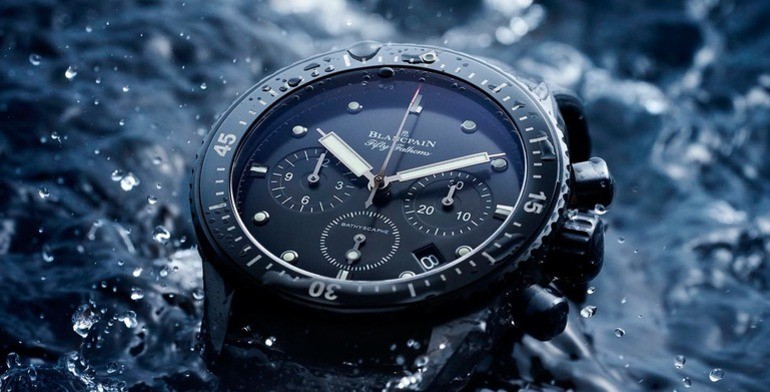
Checking the Water Resistance Rating on Your Wristwatch
The water resistance rating (Water Resistance – WR) is crucial information that helps users understand a watch’s ability to withstand water. To determine this rating, watch manufacturers conduct various tests and measurements under controlled water pressure and depths in laboratory environments.
There are several symbols used to indicate the water resistance rating on watches:
- WR: This symbol, used by many watch brands, represents water resistance in meters. For example, WR 30 means the watch can withstand water pressure at a depth of 30 meters.
- BAR: This unit, originating in the UK and widely used in Europe, measures water pressure. A watch with a 1 BAR rating can operate reliably at a depth of 10 meters.
- ATM: This unit is used globally. For instance, 1 ATM is approximately equal to 1 BAR, and a watch with a 10 ATM rating can endure depths of around 100 meters.
Thanks to these ratings, users can determine the water resistance level of their watches and use them safely in water-related activities.
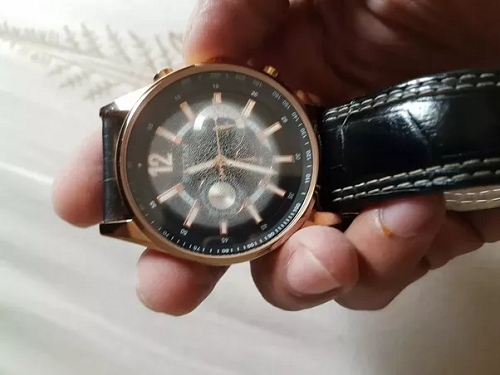
Identifying Signs of Water Damage to a Watch
Here are some signs that indicate your watch has suffered water damage:
- Condensation: If you notice small water droplets or condensation forming on the watch’s surface, it’s a clear sign that water has penetrated inside.
- Sounds of Water Movement: If you hear water sloshing inside the watch when you shake it, it’s a significant indicator that water has entered the watch’s mechanisms.
- Water Leaking: When you shake the watch and see water leaking out, even though it’s been dried, this shows that its water-resistant system has been compromised.
- Sluggish Movement or Complete Stoppage: If your watch starts running slowly or stops working altogether, it could be due to water ingress affecting its mechanisms.
- Rust and Metal Corrosion: Prolonged exposure to water can lead to rusting and metal corrosion on the watch’s components. This is a severe issue that may be irreparable.
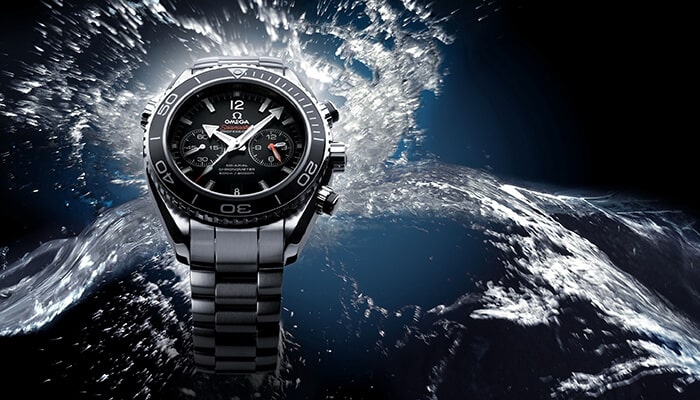
Causes of Water Damage to Watches
1. Inadequately Sealed Crowns or Pushers: One of the most common reasons for water damage is improperly sealed crowns or pushers. When these are not tightly sealed, water can easily seep through the gaps, even if the watch has a water-resistant feature.
2. Exposure Beyond Water Resistance Limits: Depending on the watch model, the water resistance feature can vary, and these specifications are often printed on the dial or case back. A common water resistance rating is 30m (3Bar/3ATM), which allows you to use the watch in light rain or while washing your hands. Watches with a water resistance rating over 50m (5ATM and above) can usually be used similarly to those with a 30m rating, but they provide an extra level of security.
3. Sudden Temperature Fluctuations: Rapid changes in the environmental temperature can cause moisture in the air to enter the watch’s interior. Extended exposure to high temperatures can affect internal components, leading to severe damage and decreased water resistance.
4. Exposure to Chemicals, Alkalis, or High Salt Concentrations: Another common cause of water damage is exposure to solutions, chemicals, alkalis, or high salt concentrations, whether from seawater or even your sweat. These substances can corrode and rust the watch’s components.
5. Severe Impact or Cracks: Accidental heavy impact on the watch, such as hitting a wall or a hard surface, can create cracks, allowing water to enter. Even minor cracks can lead to water ingress when the watch is exposed to moisture or sweat.
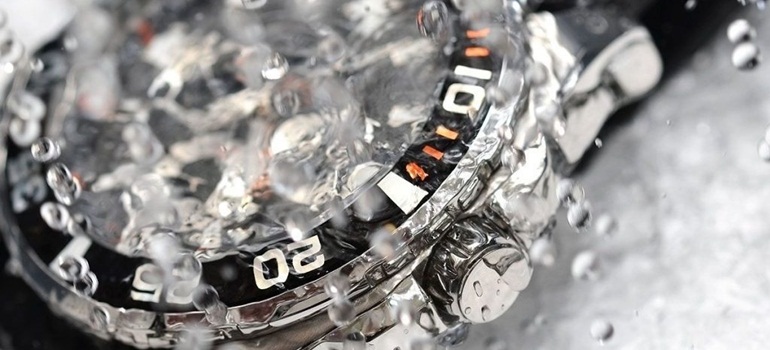
Dealing with Water-Damaged Watches
1. Using a Rice Container or Desiccant Bags: One way to address water-damaged watches is by using a container of uncooked rice or desiccant bags with high moisture-absorbing properties. However, when placing the watch in rice, be cautious about dust and insects entering, which could further damage the watch. To prevent this, wrap the watch in tissue paper or use desiccant bags inside a sealed container.
2. Using Soft Cloth or Tissue Paper to Absorb Moisture: You can use soft, highly absorbent cloth or tissue paper to wrap the watch’s surface and place it face down to allow the material to soak up any remaining moisture. However, this method may not be effective for watches with excessive water ingress.
3. Wearing the Watch Upside Down: Some people believe that wearing a water-damaged watch with the face down on your wrist can help evaporate the moisture. This relies on the principle of body heat from your wrist aiding in the evaporation process. However, this method may not work for watches with severe water ingress, as the moisture may have already affected internal components.
4. Using a Hair Dryer on Low Heat: You can carefully use a hair dryer on low heat to gently dry the watch’s surface. Ensure that the heat is not too high to avoid damaging the watch’s components. Maintain a safe distance and constantly move the dryer to prevent overheating.
5. Placing the Watch Under Strong Light: Allowing the watch to sit under a strong light source for an extended period can help evaporate trapped moisture. However, this method may not completely remove the moisture, and excessive heat from the light can potentially damage the watch.
6. Seeking Professional Repair Services: When you encounter serious water damage, it’s advisable to take your watch to the nearest authorized service center for prompt repair. The methods mentioned above only partially address the issue, and if the damage is severe, it can worsen over time. Therefore, bringing the watch to a service center is crucial.
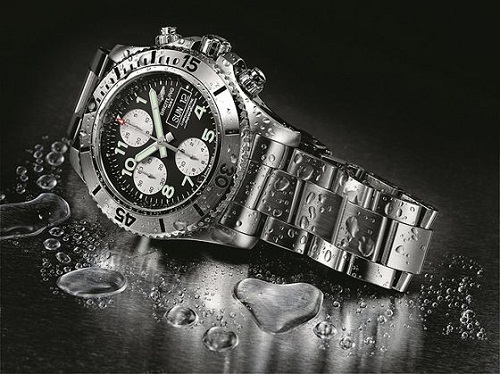
Precautions to Avoid Water Damage to Watches
- Use watches that match the recommended water resistance rating provided by the manufacturer. Select watches with water resistance ratings of 5 ATM or higher if you plan to use them in heavy rain or during swimming without worrying about water damage.
- Avoid adjusting your watch in environments with extreme temperatures or underwater. If your watch has screw-down crowns or case backs, make sure they are securely tightened before coming into contact with water.
- For high-value watches, periodically check the water resistance rating and ensure that the watch’s moisture-absorbing materials are in good condition to prevent unnoticed water ingress.
- If your watch experiences a severe impact, causing the crown, pushers, or crystal to crack or break, promptly take it to a service center for immediate replacement.
Remember that maintaining your watch’s water resistance is essential for its longevity and functionality, so it’s crucial to follow these precautions and promptly address water damage to your timepiece.





